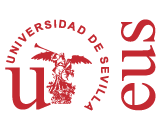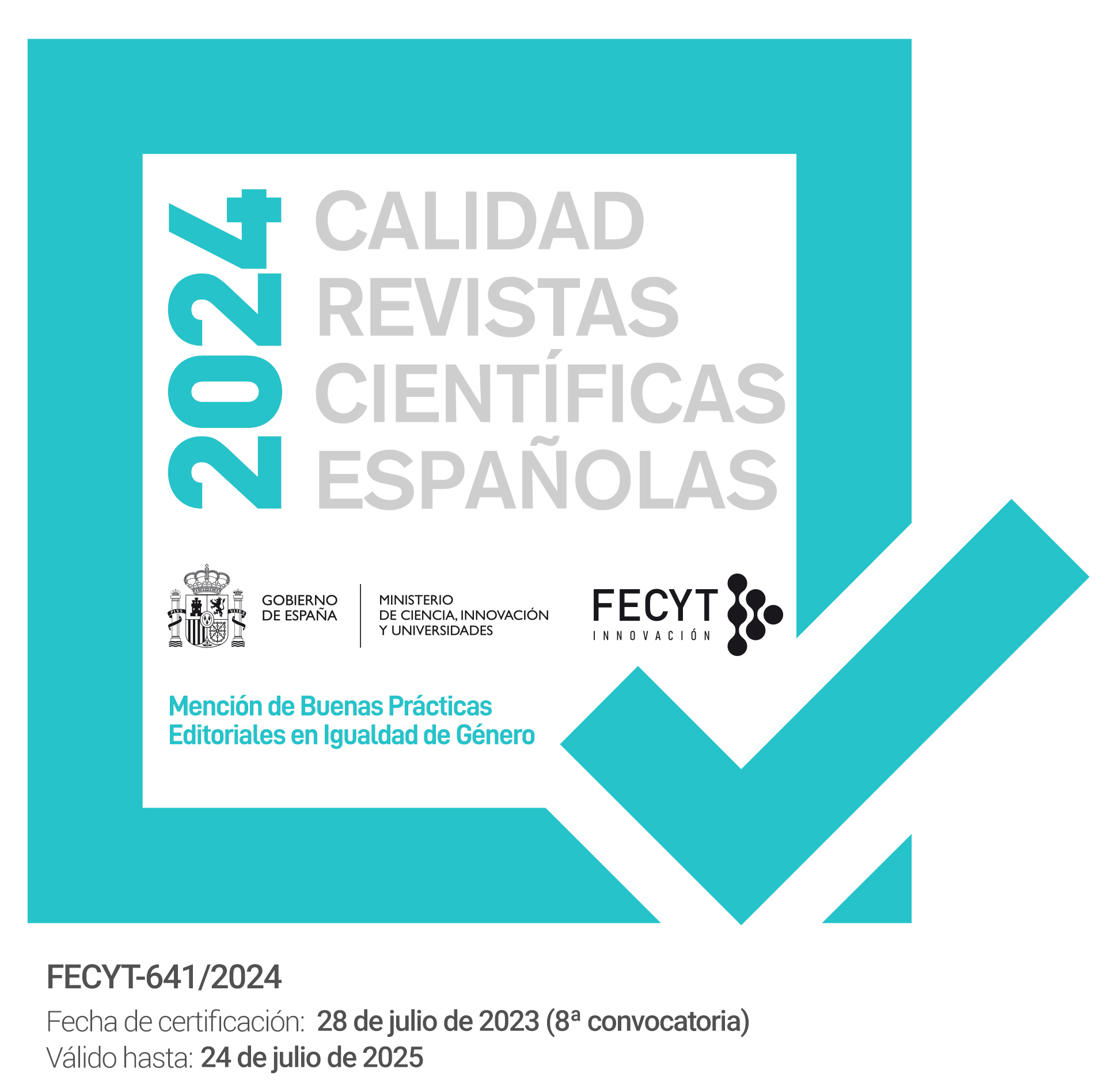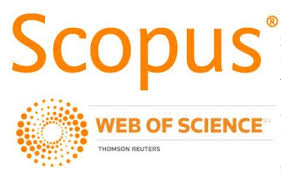An Approach to the Study of the Political Linguistic Landscape in the Basque Country: Comparative Analysis between Vitoria-Gasteiz and Zizurkil
DOI:
https://doi.org/10.12795/PH.2024.v38.i01.07Keywords:
linguistic landscape, sociolinguistic reality, linguistic attitude, Basque language, Spanish languageAbstract
This paper discusses the political linguistic landscape in the Basque Country. Two sociolinguistically different places are compared: a guipuscoan town where more than 60% of the population speak Basque and the city of Vitoria, with 80% of inhabitants having Spanish as a mother tongue. Based on this reality, the following paper analyses language representations with political content in the linguistic landscape to determine the difference in the use and election of both official languages in the Basque Country. It concludes that Basque is the prioritized language in the signs of ideological character.
Downloads
References
Aiestaran, J., Cenoz, J. y Gorter, D. (2013). Perspectivas del País Vasco: El paisaje lingüístico en Donostia-San Sebastián. Revista Internacional de Lingüística Iberoamericana, (21), 23-38.
Backhaus, P. (2006). Multilingualism in Tokio: A look into the linguistic landscape. En D. Gorter (Ed.), Linguistic landscape: A new approach to multilingualism (pp. 52-66). Multilingual matters. https://doi.org/10.21832/9781853599170-004
Barni, M. y Bagna, C. (2010). Linguistic landscape and language vitality. En E. Shohamy, E. Ben-Rafael y M. Barni (Eds.), Linguistic landscape in the city (pp. 3-18). Multilingual Matters. https://doi.org/10.21832/9781847692993-003
Ben-Rafael, E., Shohamy, E., Hasan Amara, M. y Trumper-Hecht, N. (2006). Linguistic Landscape as Symbolic Construction of the Public Space: The Case of Israel. International Journal of Multilingualism, 3(1), 7-30. https://doi.org/10.1080/14790710608668383
Castillo Luch, M. y Sáez Rivera, D. M. (2011). Introducción al paisaje lingüístico de Madrid. Lengua y Migración / Language and Migration, 3(1), 73-88.
Cenoz, J. y Gorter, D. (2006). Linguistic Landscape and Minority Languages. En D. Gorter (Ed.), Linguistic landscape: A new approach to multilingualism (pp. 67-80). Multilingual Matters. https://doi.org/10.21832/9781853599170-005
De la Torre García, M. y Molina-Díaz, F. (Eds.). (2022). Paisaje lingüístico: cambio, intercambio y métodos. Peter Lang. https://doi.org/10.3726/b19620
Euskal Estatistika Erakundea. (2018, marzo 20). Población de la C.A. de Euskadi por el municipio de residencia, según el sexo y la lengua materna. 2016. Recuperado el 21 de abril, 2023, de https://es.eustat.eus/elementos/ele0014700/ti_53-poblacion-de-la-ca-de-euskadi-por-el-municipio-de-residencia-segun-el-sexo-y-la-lengua-materna-2016/tbl0014772_c.html
Euskal Estatistika Erakundea. (2022a, enero 1). Población por distritos y secciones censales de Gipuzkoa, según sexo, grupos de edad y nacionalidad. Recuperado el 12 de abril, 2023, de https://es.eustat.eus/elementos/ele0011400/ti_poblacion-por-distritos-y-secciones-censales-de-gipuzkoa-segun-sexo-grupos-de-edad-y-nacionalidad-01012022/tbl0011434_c.html
Euskal Estatistika Erakundea. (2022b, noviembre 27). El 62,4% de las personas que residen en la C.A. de Euskadi tiene algún conocimiento de euskera en 2021. Recuperado el 12 de abril, 2023, de https://www.eustat.eus/elementos/el-624-de-las-personas-que-residen-en-la-ca-de-euskadi-tiene-algun-conocimiento-de-euskera-en-2021/not0020231_c.html
Fernández-Juncal, C. (2020a). Funcionalidad y convivencia del español y el vasco en el paisaje lingüístico de Bilbao. Íkala. Revista de Lenguaje y Cultura, 25(3), 713-729. https://doi.org/10.17533/udea.ikala.v25n03a04
Fernández-Juncal, C. (2020b). El paisaje lingüístico de un área rural: Frontera, transición y contacto. Bulletin of Hispanic Studies, 97(4), 325-347. https://doi.org/10.3828/bhs.2020.19
Galloso, V., Cabello, M. y Heredia, M. (Eds.). (2023). Funciones y aplicación didáctica del paisaje lingüístico andaluz. Iberoamericana Vervuert. https://doi.org/10.31819/9783968693569
Gorter, D., Aiestaran, J. y Cenoz, J. (2012). The Revitalization of Basque and the Linguistic Landscape of Donostia-San Sebastián. En D. Gorter, H. F. Marten y L. Van Mensel (Eds.), Minority languages in the linguistics landscape (pp. 148-163). Palgrave Macmillan. https://doi.org/10.1057/9780230360235_9
Granizo, I. (2022). Altsasuko hizkuntza-paisaiaren azterketa euskararen biziberritzearen testuinguruan: Merkataritzako esparrua. Fontes Linguae Vasconum. Studia et Documenta, 54(133), 131-157. https://doi.org/10.35462/flv133.5
Kasanga, L. A. (2014). The linguistic landscape: Mobile signs, code choice, symbolic meaning and territoriality in the discourse of protest. International Journal of the Sociology of Language, 230, 19-44. http://doi.org/10.1515/ijsl-2014-0025
Landry, R. y Bourhis, R. Y. (1997). Linguistic Landscape and Ethnolinguistic Vitality: An Empirical Study. Journal of Language and Social Psychology, 16(1), 23-49. https://doi.org/10.1177/0261927X970161002
Leimgruber, J. R. E. y Fernández-Mallat, V. (2021). Language attitudes and identity building in the linguistic landscape of Montreal. Open Linguistics, 7(1), 406-422. https://doi.org/10.1515/opli-2021-0021
Lorenzo, F. P. (2022). “Triana, puente y aparte”: el paisaje lingüístico sonoro de un arrabal. En M. De la Torre García y F. Molina-Díaz (Eds.), Paisaje lingüístico: cambio, intercambio y métodos (pp. 81-107). Peter Lang.
Martínez de Marigorta Varela, L. (2016). Dinámica de las lenguas en contacto: el paisaje lingüístico del Casco Viejo de Vitoria-Gasteiz [Trabajo Fin de Grado, UPV/EHU]. https://addi.ehu.es/handle/10810/21238
Messekher, H. (2015). A linguistic landscape analysis of the sociopolitical demonstrations of Algiers: A politicized landscape. En R. Rubdy y S. Ben Said (Eds.), Conflict, exclusion and dissent in the linguistic landscape (pp. 260-279). Palgrave Macmillan. https://doi.org/10.1057/9781137426284_13
Molina-Díaz, F. (2022). El paisaje lingüístico marcado por la COVID-19. En M. De la Torre García y F. Molina-Díaz (Eds.), Paisaje Lingüístico: cambio, intercambio y métodos (pp. 109-142). Peter Lang.
Moriarty, M. (2012). Language ideological debates in the linguistic landscape of an Irish tourist town. En D. Gorter, H. F. Marten y L. Van Mesel (Eds.), Minority languages in the linguistic landscape (pp. 74-88). Palgrave Macmillan.
Pietikäinen, S., Lane, P., Salo, H. y Laihiala-Kankainen, S. (2011). Frozen actions in the Arctic linguistic landscape: A nexus analysis of language processes in visual space. International Journal of Multilingualism, 8(4), 277-298. https://doi.org/10.1080/14790718.2011.555553
Pons Rodríguez, L. (2012). El paisaje lingüístico de Sevilla. Lenguas y variedades en el escenario urbano hispalense. Diputación de Sevilla.
Rodríguez Barcia, S. y Ramallo Fernández, F. (2015). “Graffiti” y conflicto lingüístico: El paisaje urbano como espacio ideológico. Revista Internacional de Lingüística Iberoamericana, 13(25), 129-154. https://doi.org/10.31819/rili-2015-132509
Scollon, R. y Scollon, S. W. (2007). Nexus analysis: Refocusing ethnography on action. Journal of Sociolinguistics, 11(5), 608-625. https://doi.org/10.1111/j.1467-9841.2007.00342.x
Scollon, S. W. y Scollon, R. (2004). Nexus analysis. Discourse and the emerging internet. Routledge. https://doi.org/10.4324/9780203694343
Spolsky, B. (2009). Prolegomena to a sociolinguistic theory of public signage. En E. Shohamy y D. Gorter (Eds.), Linguistic Landscape: Expanding the Scenery (pp. 25-39). Routledge.
Published
How to Cite
Issue
Section
License
Copyright (c) 2024 Urtzi Reguero Ugarte

This work is licensed under a Creative Commons Attribution-NoDerivatives 4.0 International License.
The printed and electronic editions of this Journal are edited by the University of Seville Editorial, and the source must be cited in any partial or total reproduction.
Unless otherwise indicated, all the contents of the electronic edition are distributed under a license of use and distribution “Attribution-NonCommercial-NoDerivatives 4.0 International” . You can view the informative version and the legal text of the license here. This fact must be expressly stated in this way when necessary.
Authors who publish in this journal accept the following conditions:
- The author/s retain copyright and grant the journal the first publication right, and accept it to be distributed with the Creative Commons By NC ND 4.0 licence, which allows third parties to use what is published whenever they mention the authorship of the work and the first publication in this journal and whenever they do not make commercial use and reuse it in the same way.
- Authors can make other independent and additional contractual agreements for the non-exclusive distribution of the article published in this journal (e.g., include it in an institutional repository or publish it in a book) provided they clearly indicate that the work was published for the first time in this journal.
Authors are allowed and recommended, once the article has been published in the journal Philologia Hispalensis (online version), to download the corresponding PDF and disseminate it online (ResearchGate, Academia.edu, etc.) as it may lead to productive scientific exchanges and to a greater and faster dissemination of published work (see The Effect of Open Access).
Accepted 2023-09-19
Published 2024-06-05
- Abstract 239
- PDF (Español (España)) 123
- HTML (Español (España)) 16
- XML (Español (España)) 19







